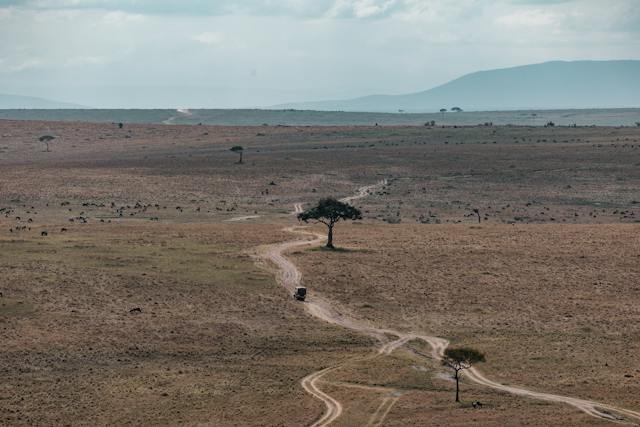The dream of owning a piece of land, whether for building your dream home, establishing a business, or simply as an investment, is a significant life milestone. However, not all lands come equipped with the essential utilities that we often take for granted, such as electricity, water, sewage, and gas connections. Buying land without connected utilities can present both challenges and opportunities. This article aims to provide a comprehensive guide for individuals considering land that lacks connected utilities, exploring the considerations, options, and steps to take in such a scenario.
Understanding the Situation
Purchasing land without connected utilities requires a thorough understanding of the specific circumstances. It is important to establish why the utilities are not connected in the first place. Common reasons include the land’s remote location, recent development in the area, or regulatory restrictions. Conduct thorough research to determine the feasibility of connecting utilities to the land and assess whether the investment aligns with your goals.
1. Assessing Feasibility
Before finalizing the purchase, it’s essential to undertake a feasibility analysis to grasp the viability and expenses associated with linking utilities to the land. Interact with nearby utility companies to collect insights regarding their readiness and capacity to expand services to the property. This phase is of utmost importance, as it provides a transparent view of the likely hurdles and financial obligations that lie ahead. By conducting a feasibility study, you can make informed decisions about the practicality and affordability of connecting utilities to the land, ensuring that you are well-prepared for the potential challenges and costs that might arise during the process.
2. Budgeting and Financial Considerations
Establishing utility connections for land that lacks them can lead to substantial costs. Developing a comprehensive financial plan that encompasses various expenditures, including permits, installation, labor, and essential infrastructure, is imperative. Additionally, account for the possibility of delays and unforeseen expenses that might arise during the process. It is prudent to juxtapose these projected expenses with the overall value of the land to verify that the investment not only stays financially feasible but also matches your economic capacities. By creating a detailed budget and conducting a thorough cost assessment, you can make an informed decision about whether the expense of connecting utilities aligns harmoniously with your financial resources and the potential value enhancement of the land.
3. Regulatory and Zoning Research
Gaining a grasp of local regulations and zoning statutes is of paramount importance. Certain regions may enforce stringent rules that limit the progress of land lacking utility connections. It is advisable to engage with local authorities to fully comprehend the intricacies of the permitting procedures, environmental prerequisites, and any plausible constraints. Failing to adhere to these regulations could result in substantial setbacks that might prove financially burdensome. It is imperative to be well-versed in the local regulatory framework, ensuring that you are in complete compliance to mitigate any potential complications and ensure a smooth progression in your endeavors related to the land.
4. Exploring Alternative Energy Sources
When traditional utility connections pose difficulties or come at a high cost, exploring alternate energy options is recommended. Renewable sources like solar panels, wind turbines, and similar solutions offer the ability to generate power, lessening dependence on regular utilities. Although the initial investment for these alternatives might be greater, the long-term advantages could render them a viable and economically sound choice.
5. Water and Sewage Solutions
Ensuring access to water and proper sewage management are essential considerations. The viability of solutions like well drilling or setting up water collection and purification systems depends on the land’s location. Similarly, the use of a septic system could resolve sewage disposal concerns. However, these options necessitate specialized advice to ensure adherence to health and safety guidelines. It is crucial to consult experts when contemplating these approaches to guarantee their compliance with established standards.
6. Off-Grid Living Considerations
When the obstacles of utility connections appear insurmountable, you could consider the option of off-grid living. This approach entails self-sustaining mechanisms like solar panels, collecting rainwater, utilizing composting toilets, and relying on propane for cooking and heating. Off-grid living provides autonomy from traditional utilities, although it necessitates meticulous planning and adapting one’s lifestyle.
7. Professional Consultation
Dealing with the intricacies of unconnected utilities requires the involvement of skilled professionals. Collaborate with architects, engineers, utility specialists, and legal consultants to assist you in navigating the procedure. Their expert perspectives can facilitate well-informed choices, preventing potentially expensive errors.
8. Negotiating with Sellers
If you’re keen on purchasing the land despite the lack of connected utilities, negotiate with the seller. Consider discussing a lower purchase price or contingencies that protect your investment until utilities are successfully connected. Sellers might be willing to accommodate reasonable terms, especially if the land has been on the market for a while.
9. Future Growth and Development
When considering land without connected utilities, assess the area’s potential for future growth and development. If nearby properties are being developed, there’s a higher likelihood that utilities will eventually be extended to your land as well. Being aware of the local development trends can influence your decision-making.
10. Patience and Long-Term Vision
Patience is key when dealing with land lacking connected utilities. The process of obtaining permits, sourcing materials, and completing installations can be time-consuming. Maintain a long-term vision and consider the potential rewards once the utilities are connected and the land appreciates in value.
Conclusion
Purchasing land without connected utilities is a significant decision that requires careful consideration and planning. While the challenges can be daunting, they also present opportunities for creative solutions and alternative living arrangements. Thorough research, budgeting, regulatory compliance, and professional consultation are crucial aspects of navigating this situation successfully. By understanding the feasibility, budgeting adequately, and exploring alternative options, you can turn a land purchase without connected utilities into a rewarding investment that aligns with your goals and values.
